How to use the trigger symbol
1. Trigger Symbol & Logic of Strategy Cycles
Every strategy has at least one trigger symbol. Click "Start Card", and you’ll see it in the property bar on the right.
Note: The "Trigger Symbol1" here is just used as a reference. A real trigger symbol will be chosen in live trading or backtest later.
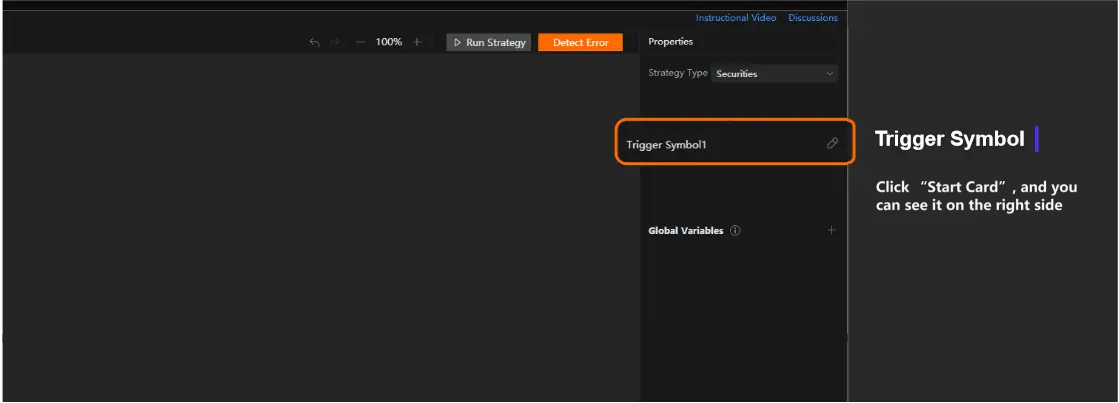
Any images provided are not current and any securities shown are for illustrative purposes only and are not recommendations.
Click "Backtest" or "Live Trading", and then you can choose a real trigger symbol in the setting window as the "Trigger Symbol1" above.
One important role of the trigger symbol is to drive the cyclical running of the strategy. Therefore, you also need to set the interval between two rounds of running.
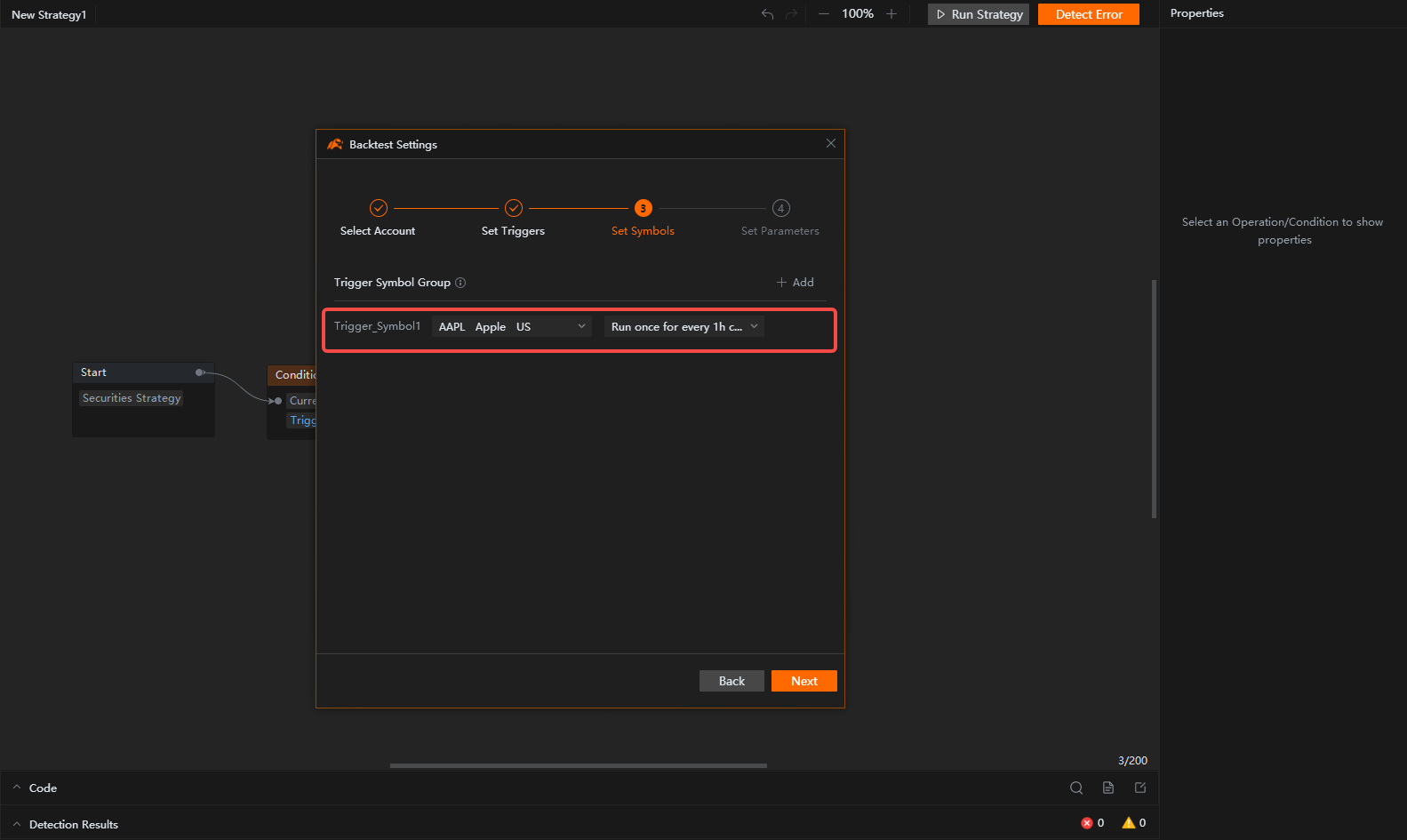
Any images provided are not current and any securities shown are for illustrative purposes only and are not recommendations.
For example, set the strategy as "Apple (AAPL.US) & Run once for every tick". It means that the strategy runs once for every time Apple (AAPL.US) price changes by the minimum increment. For this example, when the strategy runs, an order of a board lot (usually equal to 100 shares) will be placed if a golden cross occurs in the MACD.
After the end of each round of running, the strategy will wait until Apple (AAPL.US) has another tick that will trigger another round of running.
2. Multiple Trigger Symbols & Multiple Trigger Symbol Groups
When building a strategy, we can set multiple trigger symbols on the canvas.
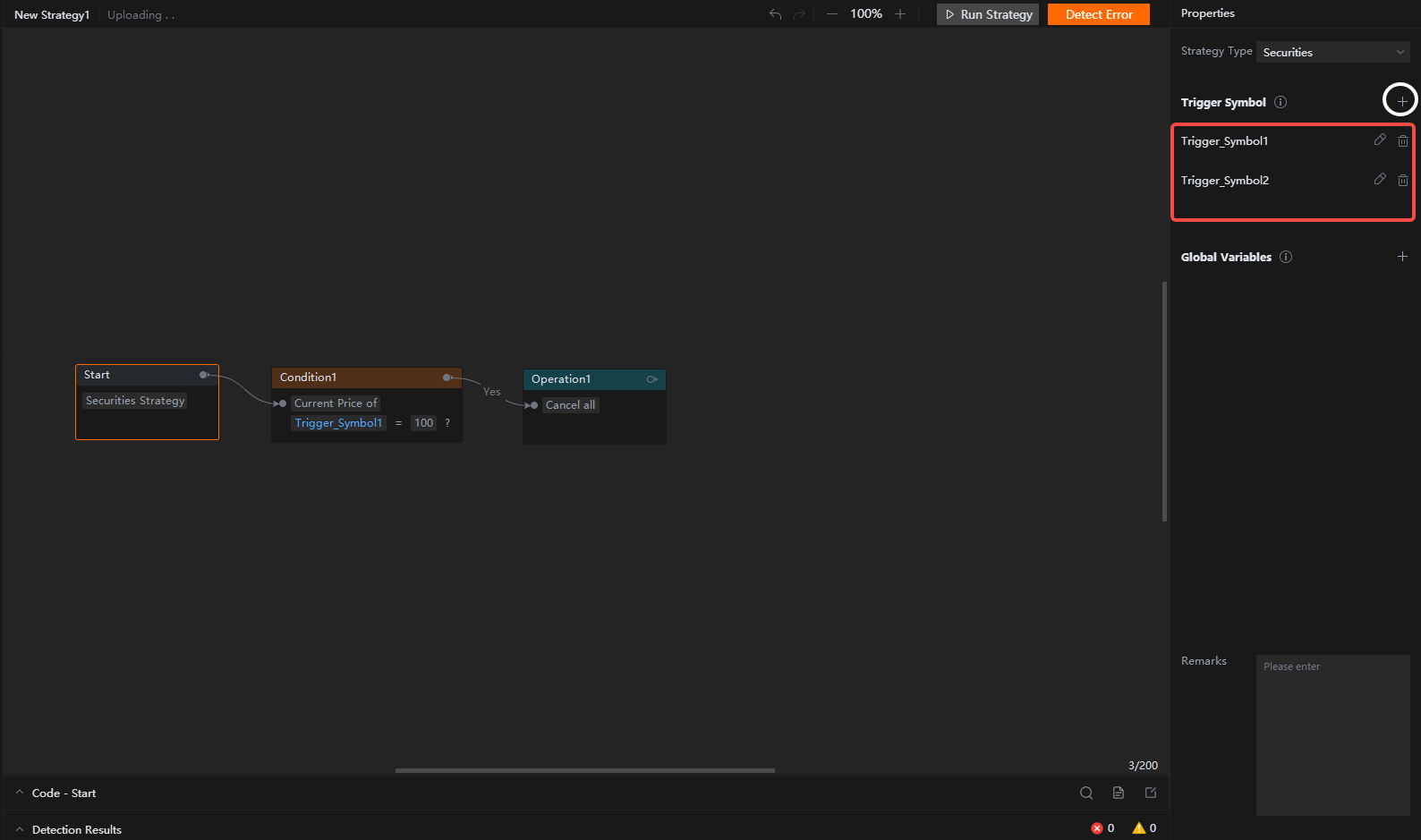
Any images provided are not current and any securities shown are for illustrative purposes only and are not recommendations.
We can also add multiple trigger symbol groups in backtest or live trading.
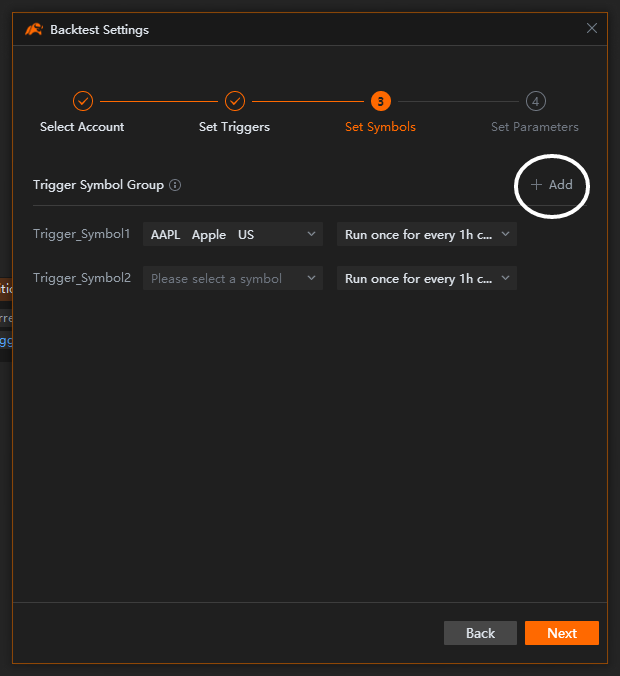
Any images provided are not current and any securities shown are for illustrative purposes only and are not recommendations.
So, what on earth is the difference between multiple trigger symbols and multiple trigger symbol groups?
2.1 Multiple Trigger Symbols
Taking the onboarding task strategy as an example, two trigger symbols are set in the "Start Card" on the canvas.
In the Backtest Setting window, assign the two trigger symbols. For this example, it will be Alibaba (09988.HK) and Tencent Holdings (00700.HK) respectively.
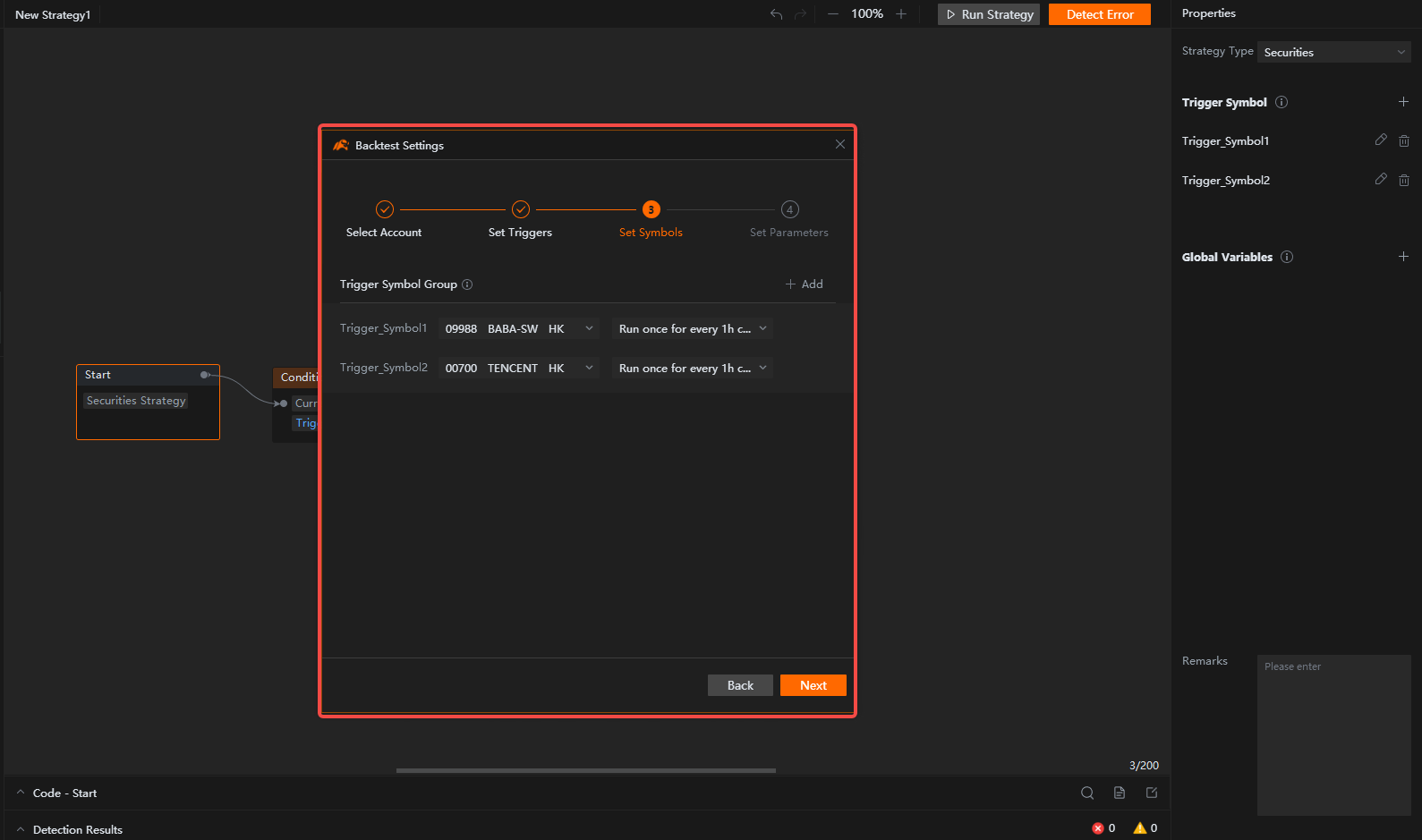
Any images provided are not current and any securities shown are for illustrative purposes only and are not recommendations.
It indicates that the ticker of both Alibaba (09988.HK) and Tencent Holdings (00700.HK) will trigger the running of the onboarding task strategy.
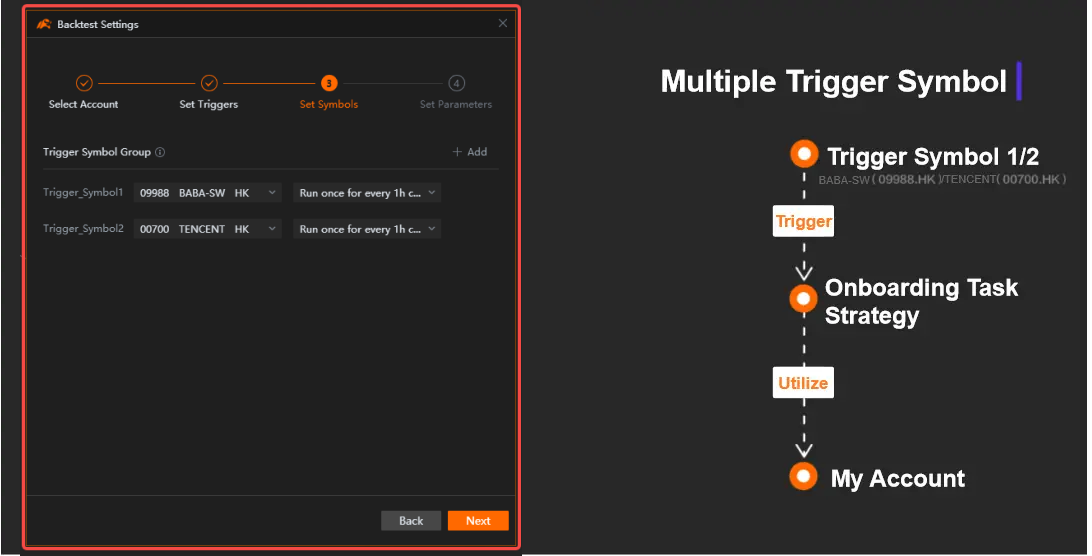
Any images provided are not current and any securities shown are for illustrative purposes only and are not recommendations.
Moreover, it doesn't matter if the strategy is triggered by Alibaba (09988.HK) or Tencent Holdings (00700.HK). No matter which ticker of these two trigger symbols triggered the strategy, the determination logic is to place an order for Tencent Holdings (00700.HK) with the MACD of Alibaba (09988.HK) as a condition.
2.2 Multiple Trigger Symbol Groups
From the above example, we can see the respective roles of different trigger symbols in one trigger symbol group.

For the next example, if you add another trigger symbol group to the onboarding task strategy and assign the two trigger symbols as Apple (AAPL.US) and Google (GOOG.US) respectively, what will happen?
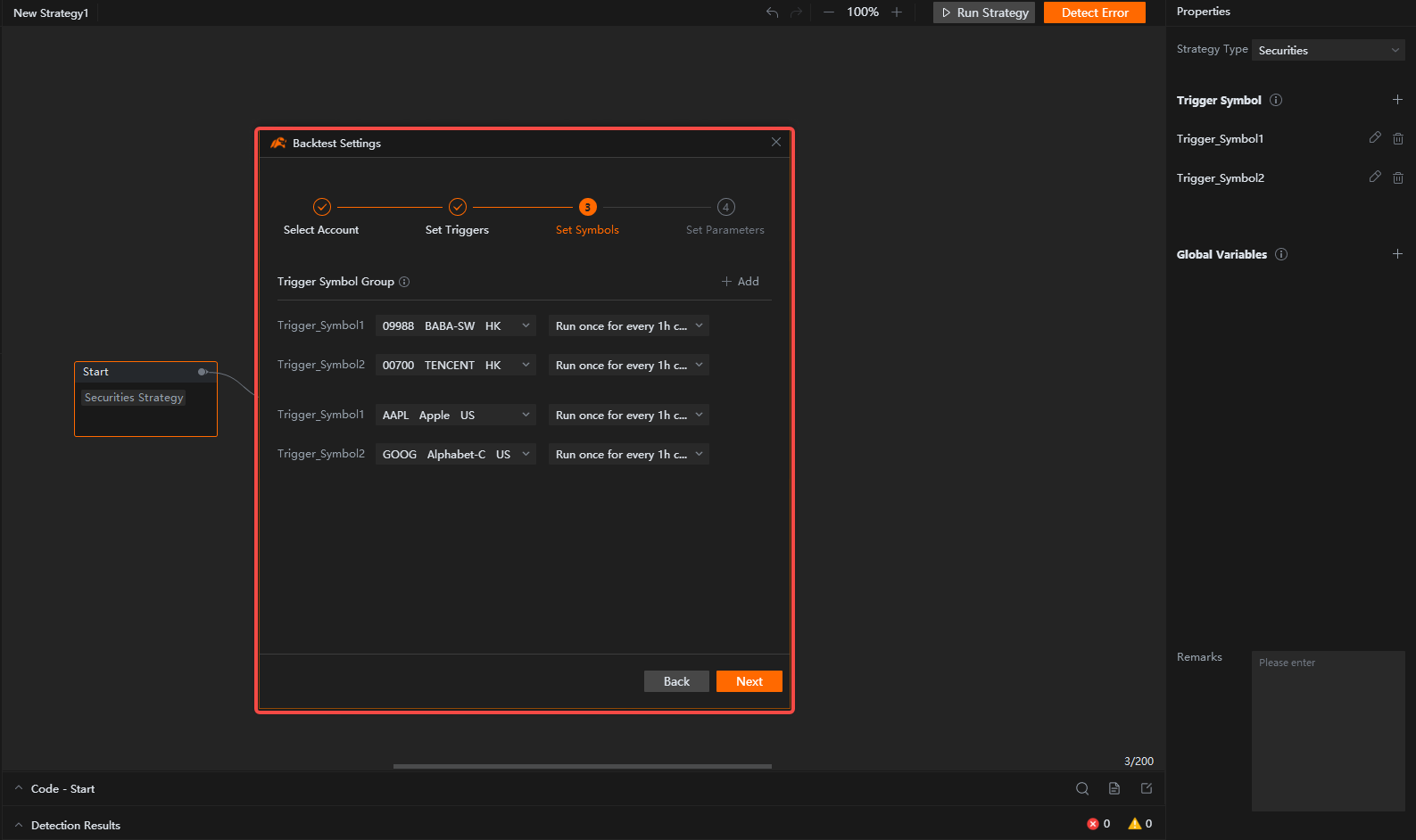
Any images provided are not current and any securities shown are for illustrative purposes only and are not recommendations.
By setting multiple trigger symbol groups, you made a copy of the onboarding task strategy.
The tickers of Alibaba (09988.HK) and Tencent Holdings (00700.HK) will only trigger the original onboarding task strategy; the tickers of Apple (AAPL.US) and Google (GOOG.US) will only trigger the copy.
The original onboarding task strategy and the copy run in a relatively independent way, but they use the money (cash) and assets (stocks) in the same account (real account or backtest account).
Therefore, if one strategy has taken up the buying power of the account, the other one may face a situation where the buying power is not sufficient to place an order.
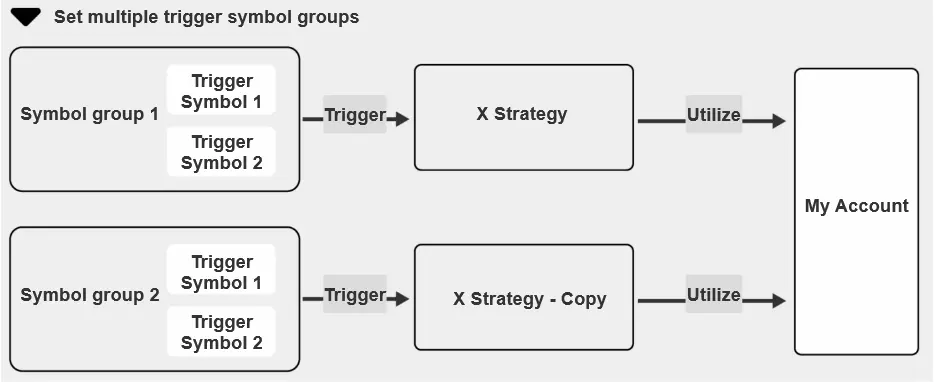
This presentation is for informational and educational use only and is not a recommendation or endorsement of any particular investment or investment strategy. Investment information provided in this content is general in nature, strictly for illustrative purposes, and may not be appropriate for all investors. It is provided without respect to individual investors’ financial sophistication, financial situation, investment objectives, investing time horizon, or risk tolerance. You should consider the appropriateness of this information having regard to your relevant personal circumstances before making any investment decisions. Past investment performance does not indicate or guarantee future success. Returns will vary, and all investments carry risks, including loss of principal. Moomoo makes no representation or warranty as to its adequacy, completeness, accuracy or timeliness for any particular purpose of the above content.